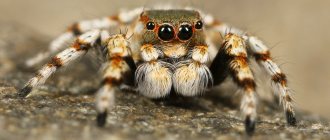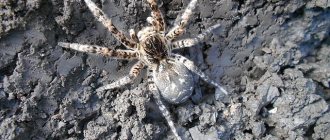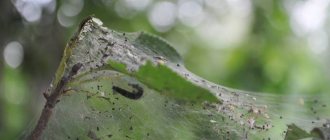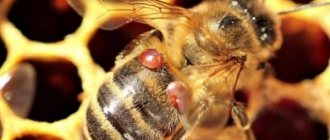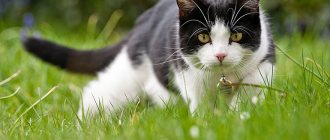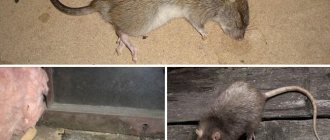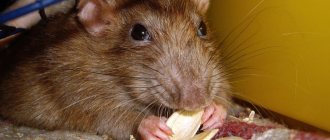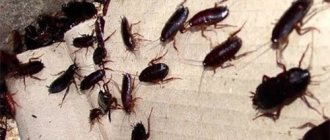Water bugs
Water Bugs
Engineers have not yet come up with a machine that runs like a car, flies like an airplane, floats like a steamboat, and dives underwater like a submarine.
What people could not invent, nature came up with. There are creatures that feel great on land, in the air, on water, and under water. These are water beetles.
The most prominent of them is a big water lover. This is a large (5 centimeters in length) green-black beetle. It is an excellent swimmer - its legs are real oars - and pursues all living things in standing waters: from mosquito larvae to fry and tadpoles. Sometimes he risks attacking small frogs. The suction cups on its front legs help it hold slippery prey.
But perhaps the most amazing thing in the life of a big water lover is the way the female takes care of her offspring. Have you ever seen small boats made of spider webs floating on the calm water of a pond or ditch? Try to capsize the shuttle - it will straighten itself again, you cannot sink it. This is how a yacht with a keel filled with ballast - stones - cannot capsize. Such ballast also lies in the web shuttles - these are the testicles of the water-loving beetle.
When going to build them, the female stands “on her head” in the water and, releasing spider threads from four glands, weaves a cocoon-shuttle. Instead of ballast, she places testicles at the bottom of such a shuttle. On top of the shuttle there is a web-like lid - a deck.
The testicles float for more than two weeks until the larvae emerge from them. In the first days they feed on egg shells, and then they come out and immediately begin hunting: first on small “game”, on mosquito larvae, and then, with age, they begin to catch dragonfly larvae and fry.
Water beetle testicles
When the time comes to pupate, the larva burrows into the coastal mud. At the end of summer a new beetle emerges. At first, its body is whitish and its skin is soft - it “ripens” in a cave for several days until its elytra hardens.
If the native reservoir dries up, the water-loving beetle goes on an air journey, looking for water. And then it happens that he mistakes the frames of greenhouses, a tin roof, and everything that glitters for the surface of water. I once picked up a stunned water lover near a mirror standing on the windowsill.
The small water lover is more common. He is two times smaller than a large water lover. We also have a beautiful water beetle - the fringed diving beetle.
It is beautifully colored: the dull olive-green elytra are bordered by a golden-yellow stripe.
I'm walking through the swamp. There's a squelch and a squelch underfoot, - I see - a hairy-legged water lover swam out to hunt. A smooth convex oval Emerald-black beetle - Here it is in a mirror puddle Outlining a crafty circle. The little frog and the fry swim away as best they can. He grabbed the frog, And the fish ran away... - Look for other food. - I hit with a net: - Stop! - And the voracious bug fell into a glass of water.
The big water lover: how the largest beetle lives
Beetles make up the largest group of living creatures on our planet.
They live on land and in water; their body sizes and shapes vary. The second name for insects is Coleoptera. Their front pair of wings are transformed into solid elytra, and the back pair is used for flight. One of the families of beetles that live in water is called water lovers. Its largest representative is the large or black water lover.
The insect, up to 5 cm in size, is the largest beetle in the European part of Russia.
Appearance
The great black water lover (Hydroohilus piceus) belongs to the order Coleoptera, the family of water lovers. One of the largest insects in the aquatic environment reaches sizes of 28-50 mm in length and 15-20 mm in width. The body is oval, convex.
The color is black with a greenish-brown tint. There are orange spots on the sides of the abdomen. The hard elytra are covered with grooves. The head is large, completely covered with a solid capsule. The eyes are large, the antennae consist of 9 segments.
The red antennae end in an asymmetrical club.
Water lover big black
The hind middle tarsi have long swimming setae. On the forelimbs, the outermost segment has changed to a triangular plate. The hind legs have sharp spines that can cut the skin. On the abdomen, under the cover of the elytra, there are 6 pairs of spiracles.
Features of behavior
The water-loving beetle can hardly be called a good swimmer. He slowly moves his middle and hind limbs alternately.
Unsynchronized movements quickly tire the beetle; it prefers to stay in shallow water and crawl along the bottom. The main diet of imagoes is aquatic plants and various algae.
The photo shows a large water lover dining on algae. But on occasion, the insect does not refuse protein food, for example, a fish corpse.
Water lover among algae
Water lovers have many enemies; they have developed two interesting ways to protect themselves:
- They spit out a paste with a strong unpleasant odor.
- It makes a frightening creaking sound, rubbing its belly against the hard elytra.
The beetle Hydroohiluspiceus flies well
Breathing Features
The process of the beetle inhaling atmospheric air deserves special attention. The insects extend their segmented antennae above the water, bending them in a special way. Air accumulates between the hairs. It flows along the antennae towards the abdomen, dotted with small silky hairs. Air bubbles are inhaled through the thoracic spiracles. The beetle swims until its oxygen supply runs out.
Spreading
The homeland of water lovers is the Palearctic. Beetles can be found in most of Europe, the Caucasus, Central and Central Asia, Scandinavia, China, the Mediterranean, and southern Siberia. The insect chooses bodies of water with stagnant, well-heated water.
Reproduction
The mating and breeding season for water lovers is spring. The female constructs an unusual cocoon for laying eggs. Before making it, she finds a suitable dense leaf of an aquatic plant. Silvery threads are attached to its underside, which stand out from the abdomen of the female.
Based on the shape of her own body, she begins to create a pouch, intertwining the fibers with each other. Having completed the external frame, the female changes her body position and begins to increase the thickness of the walls from the inside.
The final step is to coat the bag with a special sticky liquid, making it waterproof.
Having prepared the place, the female begins laying. Her white oblong eggs are laid in rows in a cocoon. All of them turn out to be 40-50 pieces. From above, the masonry is filled with a secretion, which after hardening resembles cotton wool.
Next, the lid and the appendage extending to the surface are completed. The outlet serves as a float and ventilation. Building a cradle for offspring takes 2-3 hours. The larvae hatch after two weeks, but do not immediately strive to leave their safe shelter.
They spend some time in the cocoon, feeding on its contents.
Water lover larva
The larvae have a thick body and short legs. They are omnivores, but prefer live prey. The larvae prey on invertebrates, fry, and tadpoles. They attack from an ambush and, having caught their prey, rise to the surface. The food is eaten in the air, while the larva has to throw back its head.
She does not have salivary glands, so food is watered with gastric juice to soften it. The last instar larva emerges from the pond and pupates in the soil near it.
The young large water-loving beetle is dug out at the end of summer. His path leads to water. The development of an insect from egg to adult takes about three months.
If a shallow body of water dries up, the beetles go in search of a new home.
Related species - small water lover
Among the beetles of the Hydrophilidae family, not all species can boast of large sizes. The small water lover is a small insect 13-18 mm long. The body of the insect is convex, the main color is black, but there is a greenish tint. Elytra with rows of dots. The maxillary palps are long and uniformly dark in color.
The limbs have few hairs for swimming. Beetles choose small bodies of water with rich vegetation. Preference is given to small ponds with a muddy bottom. The adults are vegetarians, and the larvae emerging from the cocoon are carnivores. The offspring of the lesser water lover are distinguished by hairy growths on the sides of each body segment.
Small water lover
Keeping in an aquarium
Black water lovers are quite peaceful beetles. They are kept in aquariums along with fish. They actively feed on algae, providing a service to the owner by cleaning the aquarium. In the absence of algae, insects eat fish food (bloodworms), pieces of lettuce or white bread. The container must be covered, otherwise the beetles will fly away.
Source: https://BeetleStop.ru/vodolyub-bolshoy/
Lifestyle of water lovers
Water lovers are beetles that can coexist peacefully with other aquarium inhabitants.
Their diet mainly consists of algae and soft parts of aquatic plants. In this regard, water lovers are kept in aquariums to clean it. But if valuable plants grow in an aquarium, then it is better not to plant water lovers in it.
If these beetles are kept in an aquarium, then they eat with great pleasure what the fish eat: bloodworms, white bread, tubifex worms, and so on. They also eat dandelion and lettuce leaves.
Aquatic swimmers are not as good swimmers as swimmers because their bodies are not as streamlined and more convex, and their legs do not function as well as oars.
When swimming, water lovers row simultaneously with two pairs of hind legs. In water, they mostly float along the bottom. But these water beetles can fly very well.
They have an air breathing method. Having risen to the surface of the water, the water lover sticks his antennae out of it and makes weak movements with his head. At this time, air is drawn into them and envelops the abdomen.
These beetles have a lot of enemies. They are protected in two ways:
- Releasing a stinking mush from the body.
- An unpleasant grinding of underwings on the abdomen.
With these methods listed above, water lovers try to scare away their enemies.
Description of the large water lover
These beetles swim very poorly and reluctantly; they mainly prefer to crawl on aquatic plants. When swimming, water lovers make asynchronous movements with their middle and hind limbs. The tarsi have swimming bristles on the upper side. Essentially, they resemble swimming oars. The breathing of water-loving beetles is airborne, that is, they breathe atmospheric air. Periodically, they rise head up to the water surface and breathe with thick club-shaped antennae, extending them out of the water. The air is retained in the lower part of the body, between the hairs, and therefore they shine like silver underneath.
Males have suckers on their paws. This is what a big water lover looks like. Body shape, nutrition and appearance are all related characteristics. They largely determine the beetle’s lifestyle, how it hunts and moves. The sides of the abdomen are covered with red spots. Its lower part is without a longitudinal keel. The head is massive with large eyes. The elytra have thin grooves and rows of dots between them. The beetle's antennae are red with an asymmetrical club.
The large water lover is distinguished from others by its black body. Coloring and nutrition have little to do with each other. But perhaps because the water lover mainly eats plants, its black color has taken on an olive-greenish tint. Also, the color of the beetle may be different. Meet:
- Dark brown beetles.
- Dark blue.
Methods for controlling miniature pests
Pests often enter the house along with wooden building materials.
Inconspicuous, almost invisible beetles rarely attract the attention of people who are focused on work. Therefore, a few tips will help you spot your worst enemy before he takes action:
- Unusual crackling of wood during daylight hours indicates that a longhorned beetle has settled under the bark of an uncleaned trunk. Noise at night indicates the presence of larvae in the structure of the felled tree.
- If winding miniature tunnels are visible on the surface, this is a sign of an infected product.
- The bark can be easily removed from the surface of the trunk, which means the beetles are somewhere nearby.
- Brown or yellowish dust indicates large colonies of pest larvae that feed abundantly on wood.
The presence of these signs prompts immediate action. But how to get rid of the longhorned beetle and protect your home from irreparable harm? The optimal solution is to treat wooden building structures with special substances. Otherwise, the beetles will freely enter the new home. However, in some cases, builders neglect to do this treatment and over time, pests take up residence in wood structures.
To eliminate longhorned beetles from wooden structures, it is necessary to perform the following work:
- cleaning contaminated surfaces with a brush;
- removing wood dust with a vacuum cleaner;
- preparing the insecticide according to the instructions provided;
- processing various recesses, crevices or holes on a wooden structure using a spray gun.
To ensure 100% effect of the chemical, the room is tightly closed for 3 hours. After this period, be sure to ventilate for at least 6 hours.
Lifestyle
The water lover is predominantly nocturnal, preferring to fly out on a warm moonlit night. The beetle has many enemies, from which it defends itself by making an unpleasant grinding sound with its elytra. The water lover can scare off the enemy in another way, by releasing a paste of unpleasant odor from the body.
The fringed swimmer and the great water-lover also differ in habits. When surfacing, the water lover sticks his head out and draws in air with his antennae. As a result, oxygen envelops the abdomen from below, forming a kind of bubble. The swimmer takes in air by raising its belly.
The main habitat of the large water lover is a reservoir, pond or river; the fringed swimming beetle can live in both running and standing water. The food of the large water lover is algae, rotten parts of aquatic plants, the remains of dead insects and river fish. If you keep such beetles at home in an aquarium, you can feed them with aquarium fish food, bloodworms, tubifex, and even lettuce or dandelion leaves.
The swimmer is a predator that attacks all small aquatic inhabitants: snails, tadpoles, insects, crustaceans, and fry. The swimming beetle and its larva are the most dangerous enemies of fish, as they eat not only fry, but also fish eggs.
Appearance
The great black water lover (Hydroohilus piceus) belongs to the order Coleoptera, the family of water lovers. One of the largest insects in the aquatic environment reaches sizes of 28-50 mm in length and 15-20 mm in width. The body is oval, convex. The color is black with a greenish-brown tint. There are orange spots on the sides of the abdomen. The hard elytra are covered with grooves. The head is large, completely covered with a solid capsule. The eyes are large, the antennae consist of 9 segments. The red antennae end in an asymmetrical club.
The hind middle tarsi have long swimming setae. On the forelimbs, the outermost segment has changed to a triangular plate. The hind legs have sharp spines that can cut the skin. On the abdomen, under the cover of the elytra, there are 6 pairs of spiracles.
Related species - small water lover
Among the beetles of the Hydrophilidae family, not all species can boast of large sizes. The small water lover is a small insect 13-18 mm long. The body of the insect is convex, the main color is black, but there is a greenish tint. Elytra with rows of dots. The maxillary palps are long and uniformly dark in color. The limbs have few hairs for swimming. Beetles choose small bodies of water with rich vegetation. Preference is given to small ponds with a muddy bottom. The adults are vegetarians, and the larvae emerging from the cocoon are carnivores. The offspring of the lesser water lover are distinguished by hairy growths on the sides of each body segment.
Information. To move to bodies of water more suitable for habitation, the beetle uses its wings.
The largest beetles in the world
Once upon a time in childhood it seemed to us that cockchafers were very big. But in fact, there are much larger insects in the world. Let's look at some types of large beetles.
Titan is the largest insect (beetle) in the world. Biologists discovered an individual seventeen centimeters long, and in nature there are also twenty-centimeter giants. The habitat of such beetles is the Amazon rainforest. Females are larger in size than males. They live inside trees. With such impressive sizes, the beetles live only five weeks. Titan is simply a unique creature that does not even have close relatives. It belongs to the family of longhorned beetles, also called lumberjacks, which are distinguished by their beauty due to their large curved mustaches. The price of one such woodcutter beetle reaches five hundred dollars.
Are large water lovers dangerous for humans?
This type of beetle does not pose any danger to humans. Since it was in the reservoir that the water lover found a great habitat. Its diet does not include various agricultural crops that belonged to humans. This means that the water lover will not cause harm to agriculture and land. Also, these beetles do not eat wood. Accordingly, they do not threaten the forest industry.
Water lovers are not carriers of various infectious diseases, and their populations are not so large as to even potentially be able to harm humans.
Large water-loving beetle
Great water lover (Hydrous aterrimus)
Class - insects Order - beetles Family - water lovers
Rod - big water lovers
Appearance
Black. Length 32-40 mm. The hind and middle legs are shaped like oars. The beetle has hairs on its hind legs that allow it to swim in a body of water. Males have swimming devices called suction cups on their front legs.
Habitat
The insect is distributed in Central Asia, Europe, and Western Siberia. He lives in a stagnant pond overgrown with plants. They try to stay in shallow water.
Behavior
Larvae and adult insects live in water.
Aquarians are good flyers, but clumsy swimmers.
For protection, the water lover spits out a foul-smelling mush and makes noisy sounds with its wings during the flight.
The breathing method of water lovers is interesting: the beetles extend bent antennae out of the water, between the hairs of which air accumulates; then, when the antennae are drawn up, the air passes to the thick hairs of the lower part of the chest and from there under the elytra, where the spiracles are located.
The larvae lead a predatory lifestyle, eating aquatic insects, tadpoles and fish fry. Adult beetles, on the contrary, prefer plant food (usually algae), but are not averse to occasionally feasting on weakened or dead animals.
Reproduction
In spring, the female builds a large ovoid cocoon from special secretions, attached to a floating leaf of some aquatic plant; She lays eggs in the cocoon and attaches a special curved “spout” to it, which sticks out of the water in any position of the cocoon and serves to supply the developing eggs with air. The cocoon floats on the surface of the water for 2-3 weeks, after which young larvae emerge from it. They are thick, crawl, move along the stalks of algae, then crawl out onto the shore and pupate. After 2 weeks the pupa hatches.
Captivity
In captivity, water lovers are kept in a regular aquarium with water.
Water lovers live peacefully and for a long time with other inhabitants of the aquarium, including fish.
At home, water lovers willingly eat everything they feed aquarium fish (bloodworms, tubifex, white bread, etc.). They are also given lettuce and dandelion leaves. They are less willing to eat non-living food. Leftover food must be removed so that the water does not spoil.
In an aquarium with water lovers, you can see silvery “capsules” on the plants - these are beetle excrement.
Water lovers mostly crawl along the bottom and aquatic vegetation, but they fly well, so the aquarium should be tightly covered with glass.
In an aquarium, it is not possible to obtain the full development cycle of the water lover. A fertilized female can build a cocoon and lay eggs, but the larvae will not pupate, since in nature this happens in damp soil on the shore of a reservoir. To hatch adult beetles, aquaterrarium conditions are required. If, having seized the moment, the larvae are placed in a jar with wet sand, they will transform into a pupa.
In the aquarium, the water lover should be kept separate from predatory beetles that can harm this peaceful insect.
Development cycles of water lovers
After mating, female water lovers construct fairly large cocoons for eggs, the diameters of which can reach up to 25 millimeters. The female builds a cocoon from a substance secreted from her body. The cocoon has a long process, like a mast. A cocoon with eggs floats at the surface of the water. The female covers it with leaves, so only the shoot remains visible. Inside the cocoon, the eggs are surrounded by a soft, cotton-like mass. After about 2 weeks, the larvae emerge from the cocoon.
The water lover larva is a predator.
Unlike adults, larvae are predators; they eat various aquatic creatures. The larva grabs the victim with its strong jaws and slowly eats it, biting off one piece at a time.
The larva pupates on the shore of a pond. But in an aquarium, water lovers do not go through the entire development cycle, since the larva does not pupate.
Neighbors on the Planet Insects (61 pages)
The largest beetle living in our waters is the great water lover
Oddly enough, it swims poorly, and some species of water lovers only crawl on aquatic plants. These beetles feed on plant foods, and sometimes on small insects. And their larvae are real predators
And their larvae are real predators.
Water lovers - those who know how to swim - move slowly in the water, rowing with their hind legs alternately (swimmers, for example, at the same time), and from time to time rise to the surface. But they don’t show their heads, they show their antennae. A drop of air sticks to the antennae, the water lover bends it and presses it to his chest. The chest is hairy, air clings to the hairs, and thus the beetle stores air. Therefore, in the water it appears silver from below.
In the spring, in May, the female begins to lay eggs. This is not an easy matter for water lovers. First you need to find some suitable floating object - a stick or a leaf. The female presses him to her chest, simultaneously releasing a whitish web, and from this web she weaves a cloth. She works long and hard, but in the end she builds a bag and finds herself inside this bag. There the female begins to lay eggs and, gradually filling the sac, crawls out. When the laying is completed, and 50–60 eggs lie at the bottom of the sac, the female attaches the lid, weaves a long dense cone-mast, and the result is a real ship. He can neither drown nor turn over: his testicles lie at the very bottom and the boat is stable, like the famous toy Vanka-Vstanka. In 2-3 weeks, passengers will appear in the boat - larvae. Having become a little stronger, they destroy the sides of the boat and end up in the water.
Reproduction
After spring mating, the female water lover lays eggs in a special cobweb cocoon made of white silky threads. It attaches to plants that grow near the surface of the water. The cocoon has a bag-like flattened shape. At one end it tapers and forms a horn-like process. It takes about 5 hours for the water lover to make a large cocoon. During this period, the beetle's feeding stops for a while. Since the female will directly lay eggs. She is capable of laying about 50-60 eggs. Cocoons are located on the surface of the water. Some females carry them on their abdomens until the larvae hatch.
After about 14 days, the larvae appear and remain in the cocoon until the first moult. They feed on their own skins and threads. They are cone-shaped, thick, 6-9 mm long. The larva has a whitish tint and is curved upward. It has lateral processes and a massive dark-colored head. The duration of larval development is 6-8 weeks. The larvae of a beetle such as the great water lover prefer a mixed diet. They eat plant foods, eat various invertebrate animals and can even attack tadpoles and gastropods. Typically, larvae hunt their prey from ambush. They rise to the surface of the water and catch prey, stick their heads out, pour digestive juices over it, grind it and absorb it in a semi-digested state. Small larvae are harmless, but large ones cause considerable harm to fisheries, as they eat large numbers of fish fry. Then the larvae of the water lover come to the surface of the earth and pupate in the soil. At the end of summer, the strengthened beetle, which emerged from the pupa, crawls out of the ground and goes to the pond. This takes about 2 weeks. The developmental stage from egg to adult takes about 9-14 weeks.
Hercules beetle and other large insects
Hercules reaches sixteen centimeters in length, while he is not inferior to the famous lumberjack in weight. Sometimes males can be up to nineteen centimeters long, but it should be taken into account that this figure includes the length of his horn. Hercules are native to Central and Southern Africa and are found on the islands of the Caribbean. It should be noted that even in prehistoric times there were no beetles larger than thirty centimeters. During that period there were giant dragonflies.
The elephant beetle is also one of the large insects of the world, although it is smaller in size than Hercules and titanium. On average, the weight of a beetle is 35 grams, the length of females does not exceed seven centimeters, but males reach 12 centimeters. Such insects live in Central America, Mexico, and the humid forests of South America. A device such as a curved horn serves the beetle to knock over an enemy, but not to kill him. This creature feeds on the fruits of trees and especially loves bananas. There have been cases when, during harvest, an insect ended up in boxes along with fruit, and then, having received such a surprise, people were extremely surprised that the insect survived on the road.
Malaysia is home to giant long-legged grasshoppers. They were once considered the longest insects.
But Goliath has the status of the heaviest beetle in the world. Its weight reaches one hundred grams. The average length of males reaches nine centimeters. The color varies among different varieties, but the main background is always black, and there are numerous white streaks on it. Insects are diurnal, feeding on overripe fruits and tree sap. Their usual habitat is Southeast and Central Africa.
In the CIS countries, the largest beetle is the relict longhorned beetle. Its body length is 11.2 centimeters. This rare insect is listed in the Red Book. The beetle is found in the Far East, China, and also on the Korean Peninsula.
The stag beetle has its own title. It is the largest in all of Europe. It lives mainly in European oak and beech forests. Its maximum length recorded by biologists is 8.8 centimeters. It got its unusual name thanks to its jaws, which really look like the antlers of a deer. The insect effectively uses this device in the fight against enemies. Females do not have horns, but males are very beautiful thanks to them.
The insect develops unusually: its larva goes through a very long period of 4 to 6 years, and sometimes up to 8. And the beetles themselves live a very short but eventful life, which is spent fighting for food and females. The process lasts from one to two months. These are such unusual beetles.
Insect species are generally very diverse. They all have their own characteristics - from the smallest pests to the largest giants. They seem so different, but in fact they belong to one large group. Their size largely depends on their habitat and the amount of food. Even representatives of the same species can differ in size.
Fascinating stories can be written about many types of beetles. Some species have been known to everyone since childhood and have entered folklore and fiction; others are known only to a narrow circle of specialists, but deserve to be known to a wider circle of people.
Black beetles
It is believed that black beetles are the most dangerous for human habitation. The types of such insects are familiar to us from childhood: beetles, bark beetles, cockroaches. Whichever of these parasites settles in the house, you need to get rid of it urgently. But for the fight to be effective, we need to determine who our enemy is.
Khrushchak beetles are quite large in size: about two centimeters. But their larvae are very small, and therefore difficult to detect. They should be looked for in flour and cereals. These are their favorite places. Such spoiled products should be thrown away and the shelves should be treated with potassium permanganate or vinegar.
Black cockroaches may also appear in the house. Their danger is that they are carriers of viral diseases. While beetles and bark beetles die from insecticides, they have no effect on cockroaches. Therefore, experts recommend using the services of a sanitation service.
In order to protect yourself from the appearance of uninvited guests, you can periodically carry out preventive measures that will help keep insects out of your home. To do this, insecticides are again used, which are used to treat the back surfaces of cabinets, especially in the kitchen, baseboards, corners, and pantries. Sometimes it’s easier to prevent it from appearing than to get rid of it later.
Big Black Water Lover
Heavy-bodied, shiny black, with convex elytra, the great black waterfish is found in both still and flowing water almost throughout the globe and is common in the deltas of large rivers such as the Danube.
Representatives of the water-loving family (there are more than 4,000 species in the world, and we have about 200) are diverse in size, appearance and lifestyle. Most of them are associated with water, their Russian names confirm this: Vodozhil, Omutnik, Tinolyub.
INSTEAD OF SCUBA
Despite the fact that the water lover spends a lot of time in the water, he, like the swimming beetle, breathes atmospheric air, but does it in his own, original way. The cranked antennae of the water lover end in a club, the four segments of which look like flattened cups nested inside each other, covered with thick, non-wettable hairs that form a groove on the inside of the antennae. Bringing his head closer to the surface of the water, the water lover bends them and partially sticks them out of the water, and then brings them closer to the underside of the body, which is also covered with hairs that trap air bubbles. The air columns formed on the clubs “flow down” along the antennae and come into contact with the layer of air on the beetle’s body. It turns out to be a rather large bubble between the chest and abdomen; it is even compared to a swim bladder. The water lover shines in the water, as if covered with a layer of silver or mercury.
On the chest of the water lover there is a pair of large spiracles, through which air enters thin tubes - the trachea, the respiratory system of the beetle. There are also spiracles on the abdomen - through them, the exhaled air enters under the elytra, and the beetle squeezes it into the water. And lying on the surface on some leaf, the beetle breathes directly without any tricks.
FIND FIVE DIFFERENCES
The water lover is often confused with the swimming beetle, although they are very easy to distinguish by their structure, body shape, and habits. The aquatic is more convex on top, with the elytra strongly narrowed backwards. This beetle has very long oral palps, and short antennae, because they are adapted for storing air and no longer perform sensory functions; the palps take on this role. Water swimmers swim slowly, rowing alternately with their middle and hind legs, while swimmers are faster and more maneuverable, and have both pairs of hind legs rowing at the same time. The water lover floats up to take in air with his head up, and the diving belly sticks his abdomen out of the water. The legs of the male diving beetle are equipped with disc-shaped suckers, while those of the water lover are equipped with triangular extensions.
SLOW VEGETARIAN
The black water lover prefers not to swim in the water column, but to crawl along the bottom or aquatic vegetation near the shore. The adult beetle feeds on filamentous algae and soft parts of aquatic plants, but on occasion it can eat a dead fish or insect.
In case of danger, the water lover makes creaking sounds, rubbing its belly against the inside of the elytra, and buzzes loudly in flight. It flies well, especially on moonlit nights, and can fly to electric light during the resettlement period.
CRADLE SHIP
In early spring, the female water lover begins to weave a web cocoon - a bag of threads produced by glands at the end of the abdomen. Having found some floating leaf, she attaches the first webs to it and begins to weave a bag, first one half, then the other. Inside, she finishes it with a waterproof, loose mass that hardens in air, like cement. Having laid there in rows of 40-50 white oblong eggs, she weaves a cap, ending at the top with a curved process - both a float and a ventilation hole, sticking out vertically, like a mast. As a result, the silver-white cocoon, attached to a leaf near the surface (it can be up to 25 mm in diameter), does not sink or turn over in the water, and the eggs remain dry and supplied with fresh air. It takes at least 2-3 hours to build a cocoon.
After 16-18 days, the larvae appear and remain in the cocoon until the first molt, feeding on their own skins and the shell of the cocoon. The larvae are clumsy and thick, with relatively short legs, swim poorly, crawl mostly on plants, sometimes rising to breathe - there are spiracles at the end of the abdomen. Unlike their parents, they are predatory, although they prefer sedentary prey, such as snails. To protect themselves from enemies, the larvae spray a stinking black liquid and hide in the spreading cloud of this “smoke screen”.
After two months, the larvae come ashore and make cradles for themselves, where they turn into pupae. At the end of summer, adult beetles emerge from them, which after some time are sent back to the water.
Lifestyle of the larvae of the great water lover and diving beetle
After 2-2.5 weeks, larvae appear, which are very different in appearance from the larvae of the fringed diving beetle. They are thicker and clumsier. The large head has powerful mandibles. What is also surprising is that they do not leave the cocoon, but continue to live in it until their first molt.
Water lover larvae
During this period, their food is the shell of the cocoon and their own skins. After a certain time, the larvae begin to feed on small snails and are even able to eat fish fry. Young offspring prefer to move around plants rather than swim. Using this method, it reaches the surface of the water in order to make a supply of air using the spiracles located at the end of the abdomen.
The larvae of the diving beetle and the water lover have different feeding methods. Having attacked the snail, the water-lover larva crushes its shell with its powerful mandibles. It then regurgitates digestive fluid onto its prey, which liquefies the prey. After which it begins to absorb the digested treat. The larva of the diving beetle injects digestive juice inside its victim, subsequently sucking it out from the inside.
The method of protection from enemies among the larvae of the water lover and the diving beetle is also different. When in danger, the diving beetle larva releases its sharp mandibles. The larva of the water-lover uses cunning, pretending to be half-dead. When in danger, she belches a black liquid that can color the water, which scares off the enemy.
To pupate, water lover larvae go ashore. Adult beetles will emerge from their pupae only towards the end of summer, after which they will again set off to conquer the water element.
Having compared the two types of beetles, it becomes clear that, living side by side, these aquatic inhabitants differ in many ways. And the difference is not only in what the water lover and the diving beetle eat. They have adapted to life in the same environment in different ways: they have different ways of breathing, development, and feeding of the larvae.
Habitats
The large water lover mainly lives in the following places:
- In Europe, with the exception of the far north.
- In the Mediterranean.
- In the Caucasus.
- In Central and Central Asia.
- In Southern Siberia.
- In Primorye.
- In China.
- In India.
Stagnant, heavily overgrown shallow reservoirs with clean water - this is the place that a large water lover prefers. The food there is often varied. Reservoirs should also warm up well and have a muddy bottom. Beetle nutrition:
- Seaweed.
- Rotten plants.
- Dead small fish.
- Dead insects.
